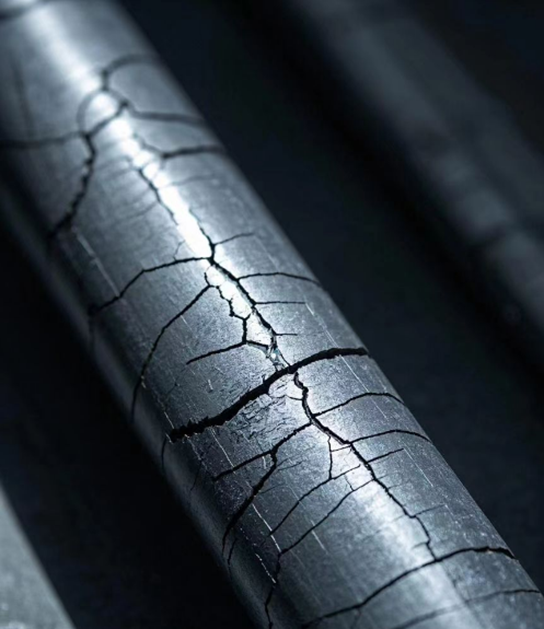Understanding SSCC: Sulfide Stress Corrosion Cracking
Understanding SSCC: Sulfide Stress Corrosion Cracking
In the energy industry—particularly in oil, gas, and related metal equipment and pipeline applications—SSCC (Sulfide Stress Corrosion Cracking) is a critical issue that cannot be overlooked. Today, let’s take a closer look at SSCC.
1. What is SSCC?
SSCC refers to the brittle fracture of metal materials under tensile stress in a sulfide-containing environment, due to the coupling effect of the environment and the stress. Simply put, in an acidic, sulfide-rich setting, metals under tension can suddenly crack. Unlike general stress corrosion, which is primarily driven by anodic dissolution, SSCC is mainly caused by cathodic hydrogen charging, and is widely believed to result from hydrogen embrittlement.

2. Characteristics of SSCC
After SSCC occurs in long-distance oil and gas pipelines, the following features are typically observed:
Low-pressure fracture: Pipelines may rupture at pressures far below their designed working levels.
Short-term damage: Damage can occur within a short time (commonly 1 week to 3 months) after exposure to the environment.
Brittle fracture: The material shows signs of brittle breakage with flat fracture surfaces.
Corrosion products: The fracture surfaces are often visibly covered with hydrogen sulfide (H₂S) corrosion byproducts.
Crack initiation sites: Usually located at stress concentration areas, mechanical scratches, pits, pinholes, weld defects, or heat-affected zones of welds.
Crack morphology: Cracks tend to be wide and unbranched, mostly transgranular but can also be intergranular or mixed.
Material sensitivity: High-strength, high-hardness materials are particularly susceptible to SSCC.
Unpredictability: SSCC often occurs without warning, making it hard to detect before failure.
3. Environmental Factors Influencing SSCC
H₂S Concentration: The higher the concentration of hydrogen sulfide, the more susceptible the material is to SSCC. In saturated H₂S solutions, sensitivity peaks. For the same material strength and hardness, increased H₂S concentration shortens the time to failure and lowers the critical stress level.
Water Content: Water is essential for electrochemical corrosion. Whether in gas or liquid phase, H₂S requires the presence of water to pose a corrosive threat.
Temperature: SSCC is most likely to occur at ambient temperatures between 20–40°C, where metals absorb the most hydrogen. Above 70°C, sensitivity drops. At room temperature, pipeline fractures may occur within just 1–2 hours.
pH Value: As the pH increases, the stability of steel in H₂S environments improves, requiring more time for cracking to occur.
Other Medium Components: In aqueous H₂S solutions, Cl⁻ and O₂ have significant impacts. O₂ can accelerate corrosion within certain limits, while high concentrations of Cl⁻ may reduce the corrosion rate. Studies show O₂ greatly promotes SSCC.
In SSCC control systems, nickel-based alloys are preferred materials for high-risk environments due to their unique composition design and microstructure, which provide excellent SSCC resistance:
Alloy Type | Resistance to H, S Environment | SSCC Threshold Stress | Typical Applications |
Hastelloy C-276 | 10000 ppm | >800 MPa | Deep-sea oil & gas pipelines, sour gas environments |
Inconel 625 | 5000 ppm | >700 MPa | Shale gas gathering lines, chemical equipment |
Incoloy 825 | 3000 ppm | >600 MPa | High-Cl environments, seawater systems |
4. Countermeasures Against SSCC
Material Selection: Choose materials with strong SSCC resistance, such as certain nickel-based alloys and low-alloy steels. For example, Inconel 625 and Incoloy 825 offer excellent corrosion and cracking resistance in sour environments.
Process Optimization: Improve welding and fabrication processes during pipeline manufacturing and installation to reduce stress concentration and residual stress.
Environmental Control: Where possible, control the concentration of H₂S and moisture in the medium—e.g., through desulfurization or drying treatments.
Corrosion Protection: Use coatings or linings to isolate metal materials from corrosive media.
SSCC poses a serious threat to metal infrastructure in the oil and gas industry. By understanding its mechanism, characteristics, and influencing factors—and implementing effective countermeasures—we can ensure safer and more reliable operations while minimizing accidents and economic losses caused by corrosion cracking.
Hope this article has helped you gain a comprehensive understanding of SSCC!

